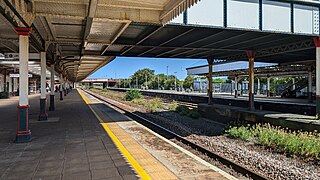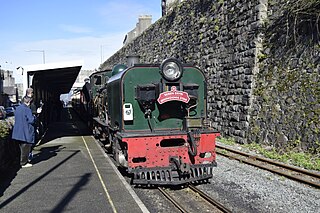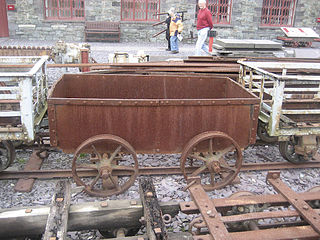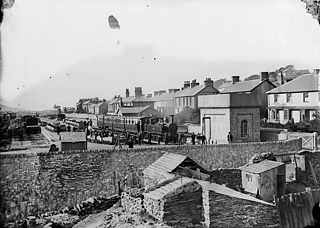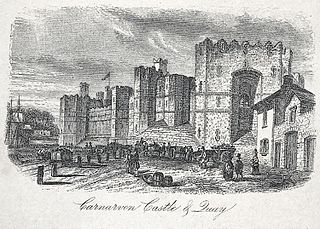Conception

The Chester and Holyhead Railway opened its line from Chester to Bangor on 1 May 1848. This was followed on 1 August 1848 by opening on Anglesey, from Llanfair to Holyhead. The intervening section was delayed by the construction of the bridge over the Menai Strait, which came to be known as the Britannia Bridge; it opened in 1850. [1]
| Bangor and Caernarvon Railway Act 1851 | |
|---|---|
| Act of Parliament | |
 | |
| Citation | 14 & 15 Vict. c. xxi |
| Dates | |
| Royal assent | 20 May 1851 |
| Text of statute as originally enacted | |
Caernarfon (then spelt Carnarvon) was an established regional centre, and a rail connection had long been considered. The Chester and Holyhead Railway had contemplated building a branch line, but in fact it was a private scheme which gained support, to Port Dinorwic only at first. The Bangor and Carnarvon Railway was authorised by the Bangor and Caernarvon Railway Act 1851 (14 & 15 Vict. c. xxi) on 20 May 1851. [2] The Bangor and Caernarvon Railway Act 1851 permitted the Chester and Holyhead Railway to work the line. It was to make a junction with the C&HR main line at a junction a little east of Britannia Bridge. [3] [4]
Port Dinorwic had been provided with a dock in 1828, [5] its principal traffic being the export of slate. The Dinorwic Railway connected to it, superseded from 1843 by the Padarn Railway. The Bangor and Carnarvon Railway reached Port Dinorwic on 1 March 1852, and the chief traffic of the new railway was slate. Passenger traffic started nine days later. It was a single line. [6] [2]
The extension to Carnarvon was undertaken immediately, and the line was opened throughout to Carnarvon on 1 July 1852; goods and mineral traffic started on 10 July 1852. The extension diverged from the Port Dinorwic line about a mile east of that place, necessitated by the ground levels: the continuation had to be above the level of the Port. The stub to the port became known as the Port Siding. The Bangor and Carnarvon Railway was leased to the Chester and Holyhead Railway in 1854, [2] and absorbed by the London and North Western Railway (which had itself absorbed the C&HR) in 1867. [note 1] [3] [2] [4]
The passenger train service was good, six trains running each way daily, with three on Sundays; population growth in the district was vigorous. [3]
On 9 May 1865 there was an accident at the Menai Bridge Junction station; a train from Carnarvon was standing in the branch loop platform at a signal at danger. The exit from the platform was in the up direction; it would cross the down main C&HR line, and a down train was approaching on that line. The driver of the Carnarvon train was given the right-away by his guard, and he started away without checking the starting signal, which was still at danger. 25 persons were injured in the resulting collision. [7]
In 1871 powers were obtained to double the line, and the Menai Bridge to Treborth section and the Port Dinorwic to Caernarfon sections were doubled in 1872; the central section was finished in 1874, including a duplicate bore for Vaynol Tunnel. [3]

